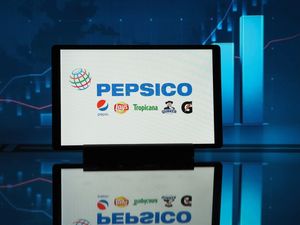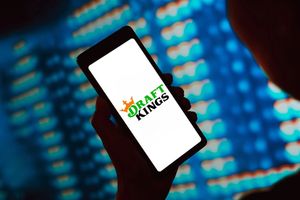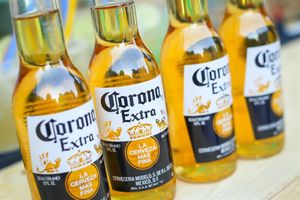The "North America Athletic Wear Market Size and Share Analysis - Growth Trends and Forecast Report 2025-2033" report has been added to ResearchAndMarkets.com's offering.
The North America Athletic Wear Market was worth US$ 25.44 billion in 2024 and is expected to rise at a rate of 7.48% during the years 2025-2033 to reach a value of US$ 48.63 billion by 2033.
With the growing consciousness of health awareness, participation in sporting and exercising activities, and development of innovative performance-enhancing materials, expansion of sustainable as well as athleisure clothes trends further escalates market demand.
Sustainable and eco-friendly sportswear is now offered by most brands, targeting green-conscious consumers. Technologies like compression wear, intelligent fabrics, and moisture control have further progressed the functionality of athletic wear. With a heightened emphasis on well-being, wellness, and physical activity, consumers are increasingly opting for high-performance, long-wearing athletic apparel in North America.
Growth Drivers in North America Athletic Wear Market
Escalating Health and Fitness Consciousness
Enhanced consciousness toward health, physical fitness, and active living is fueling sales of athletic apparel throughout North America. More individuals are taking part in gym sessions, jogging, yoga, and fitness at home, resulting in a high demand for sportswear that is both high performance and comfortable.
Wellness programs and physical activity encouraged by the government contribute to increased market growth. Furthermore, the pandemic fitness wave has prompted people to lead active lifestyles, driving demand for sportswear that is long-lasting, sweat-proof, and stretchy. This trend continues to drive demand among all age groups and demographics. The expansion of youth leagues, school programs, and adult recreational leagues propels the sports equipment market, as athletes of every age require good, dependable equipment for performance and protection.
Increased Trend of Athleisure Fashion
Athleisure, a combination of athletic and casual fashion, is a rising trend in North America. The consumer wants functional, fashionable, and versatile clothes that can switch from the gym to street wear.
Fashion companies are creating fashionable athletic apparel, combining sleek design, high-performance materials, and eco-friendly content to address this increasing demand. This change has broadened the market outside of conventional sportswear, with firms currently selling leggings, joggers, and sports bras as everyday fashion staples. Athleisure wear's versatility still draws both the fitness crowd and the casual buyer.
Improvements in Performance and Eco-Friendly Materials
Improved technology in design and fabric has played a big role in increasing market size. Firms are creating moisture-wicking, temperature-controlling, and odor-killing athletic wear, which provides greater comfort and longevity. Intelligent fabrics that offer UV protection, compression properties, and muscle recovery assistance have become popular among sports enthusiasts. Moreover, the emphasis on sustainable and eco-friendly materials, including recycled polyester and organic cotton, resonates with environmentally friendly buyers.
Brands at the forefront are making green manufacturing processes investments in order to lower carbon footprints, thereby boosting demand for sustainable sporting attire. For example, in March 2023, The National Collegiate Athletic Association reports that 5% more student-athletes participated in NCAA women's championship sports, from 215,466 in 2021 to 226,212 in 2022. This increase in athletes is driving growth in the sustainable athleisure industry.
Challenges in the North America Athletic Wear Market
High Market Competition and Brand Saturation
The North American market for athletic apparel is extremely competitive, with traditional global brands such as Nike, Adidas, and Under Armour fighting against new boutique brands and private labels. With such high levels of competition, it is hard for smaller players to capture market share. Also, fast-fashion retailers are coming into the athletic apparel market with low-cost, affordable options that attract price-conscious consumers. In order to be different, brands need to invest in creative design, better fabric technology, and effective marketing efforts.
Volatile Raw Material Prices and Supply Chain Concerns
The sports apparel market depends highly on synthetic and performance-based materials, the prices of which can change based on shortages of raw materials and supply chain disturbances. Transportation congestion, global events, and labor shortages have affected distribution and manufacturing, thus increasing the cost for manufacturers and retailers. It can also be costly to source sustainable materials, making it a problem for brands trying to go green while keeping their price points competitive.
Company Analysis: Overview, Key Persons, Recent Developments, Revenue
- NIKE, Inc.
- Under Armour, Inc.
- Lululemon Athletica Inc.
- Adidas Group
- Patagonia, Inc.
- The North Face, Inc.
- Alo, LLC
- PUMA SE
- Columbia Sportswear Company
- New Balance Athletics, Inc.
Key Attributes:
| Report Attribute | Details |
| No. of Pages | 200 |
| Forecast Period | 2024 - 2033 |
| Estimated Market Value (USD) in 2024 | $25.44 Billion |
| Forecasted Market Value (USD) by 2033 | $48.63 Billion |
| Compound Annual Growth Rate | 7.4% |
| Regions Covered | North America |
Key Topics Covered:
1. Introduction
2. Research & Methodology
3. Executive Summary
4. Market Dynamics
4.1 Growth Drivers
4.2 Challenges
5. North America Athletic Wear Market
6. Market Share
6.1 By Product
6.2 By Price Range
6.3 By Distribution Channel
6.4 By Countries
7. Product
7.1 Top Wear
7.1.1 T-shirts & Tops
7.1.2 Hoodies & Sweatshirts
7.1.3 Jackets
7.1.4 Others
7.2 Bottom Wear
7.2.1 Pants & Leggings
7.2.2 Shorts & Skirts
7.3 Underwear/ Base Layers
8. Price Range
8.1 Mass
8.2 Premium
9. Distribution Channel
9.1 Supermarkets & Hypermarkets
9.2 Sporting Goods Retailers
9.3 Exclusive Brand Outlets
9.4 Online Stores
9.5 Others
10. Countries
10.1 Unites States
10.2 Canada
10.3 Mexico
11. Porter's Five Analysis
11.1 Bargaining Power of Buyers
11.2 Bargaining Power of Suppliers
11.3 Degree of Rivalry
11.4 Threat of New Entrants
11.5 Threat of Substitutes
12. SWOT Analysis
12.1 Strength
12.2 Weakness
12.3 Opportunity
12.4 Threat
13. Company Analysis
For more information about this report visit https://www.researchandmarkets.com/r/dvblk6
About ResearchAndMarkets.com
ResearchAndMarkets.com is the world's leading source for international market research reports and market data. We provide you with the latest data on international and regional markets, key industries, the top companies, new products and the latest trends.
View source version on businesswire.com: https://www.businesswire.com/news/home/20250825972314/en/
Contacts
ResearchAndMarkets.com
Laura Wood, Senior Press Manager
press@researchandmarkets.com
For E.S.T Office Hours Call 1-917-300-0470
For U.S./ CAN Toll Free Call 1-800-526-8630
For GMT Office Hours Call +353-1-416-8900





